 A return to one of my favourite places.
A return to one of my favourite places.
I had taken a flight to Launceston and had got dropped off at a Backpackers in Launceston. Next mission was to buy gas cylinders and get a National Park Pass, and then to go to the Queen Victoria Art Gallery and Museum to see the Wilderness Photography Exhibit. This was very worthwhile – the highlight being the Olegas Truchanas Audio Visual of Lake Peddar. I sat through this several times (I came back the next morning) – it is terrible what we have lost!
After a visit to the local supermarket to top up my food, I spent the evening walking through Cataract Gorge. The water level was very low so I climbed down close to the rapids to get a few photos.
The next day, after my second visit to the museum, I caught an early afternoon bus to Deloraine (the only bus to Deloraine as it turns out!) and then a taxi to the start of Higgs Track. The local taxi company are used to taking bushwalkers to track heads and I was soon able to shoulder my pack and start up the track.
Higgs Track is an easy way to get to the Central Plateau. My taxi dropped me quite high up on the Tiers and it was only a little over an hour’s walk to the open tops. About five minutes further on the Plateau is Lady Lake Hut – my destination for the first night.
I had plenty of time to walk a lot further, but why? The area around the hut is particularly beautiful. There was a lot to see and a lot to photograph. A good place to experience the evening golden hour and the dawn.
Near Lady Lake there was abundant Richea scoparia in flower. In front of the hut is a big area of pozzines. I use this term, which comes from Corsica to refer to these landform features. It refers to a series of small lakes and pools that are connected by underground channels. I have looked online for a geomorphological term to describe these pools without success – so I use the term which comes from Corsica. Certainly these pools, and many others in the alpine areas of Tasmania and New Zealand look very much like the Cosican ones.
The next day, I walked along the track to Lake Nameless and then through very easy alpine moors past a labyrinth of glacial lakes and tarns to arrive at Lake Gwendy. The lake is just one of hundred of lakes on the Plateau and no more beautiful than many others. But I did remember a nice sheltered campsite close to the lake. I arrived there just as a party of fishermen were leaving. They warned me about snakes. It had been a hot day and indeed snakes were out. A tiger snake was sunning itself very close to my campsite!
Bad weather was forecast but the next day was not too bad. There was a leaden sky for most of the day. It looked like something nasty was coming, but there was no rain or wind.
My route took me past Pencil Pine Tarn and then out to the end of the Long Tarns, past Lake Nutting and down to Lake Tyre. All this is very pleasant and easy walking as long as you are patient. You need to be prepare to potter around and looks for the easiest route through small thickest of scrub and stands of pencil pines. The pines often indicate small farms that have to be walked around anyway. Between all this is the most amazing alpine gardens. A maze of scoparia, cushion plants, sphagnum and pencil pines. A very pleasant place to walk through. But too many places where I just had to stop and take photographs. Amazing beauty! Even the dead pencil pines, standing up like skeletons, and a legacy from bush fires dating back to the early 1960’s had their own evocative beauty and power.
On the way, I passed several campsites I had used on previous trips in this part of Tasmania and also spotted many more delightful places where I would have been very happy to camp with their views of Lake Nutting and the Daisy Lakes.
This part of the walk finishes with an easy stroll down to Lake Tyre. I have never camped here and it has always seemed a cold place with a wind coming off the lake. But the foreshores are very pretty. Near the lake are many cushion plants.
Too cold for lunch, I headed down open slopes to the bottom of the Zion Gate and the start of being in the Walls of Jerusalem.
Now for the first time since Lake Nameless I could pick up faint bits of a track. Below the East Wall are many interesting features – in particular a series of conjoined cushion plants and some equally conjoined pools. However the pools, due to hot dry weather had become a lot smaller – now they were a series of pozzines. A very special place that I suspect most visitors to the Walls of Jerusalem would miss.
A large set of photos and panoramas from the walk can be viewed here.






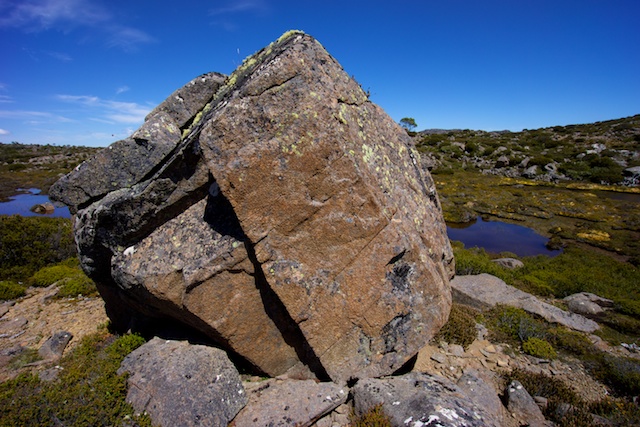
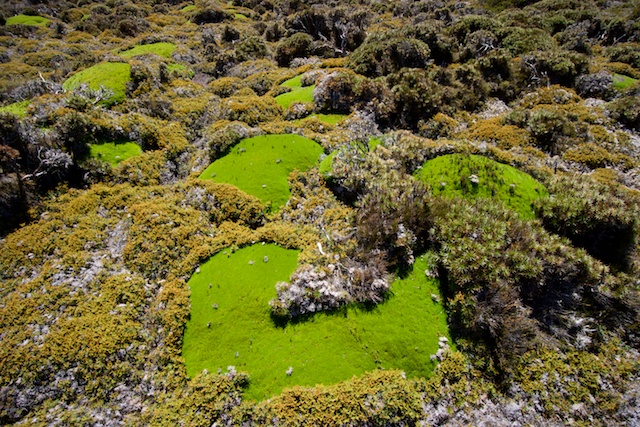
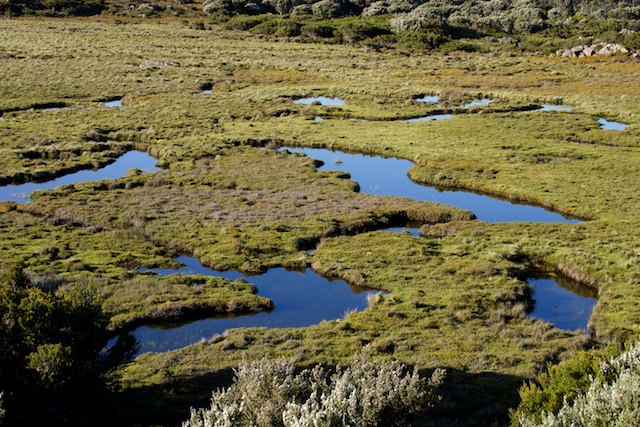
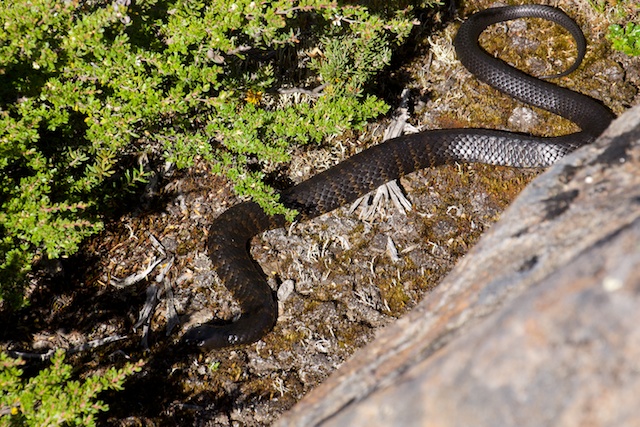
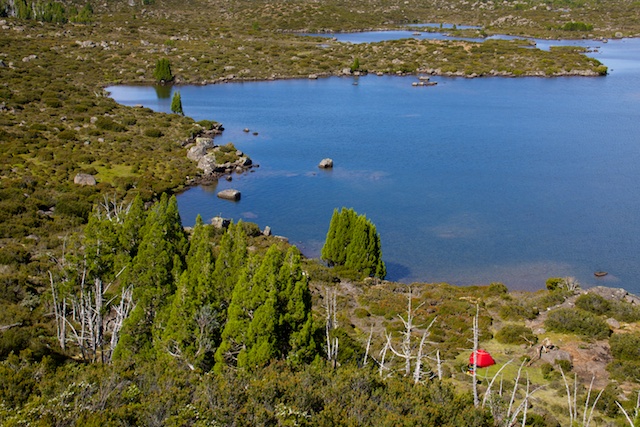

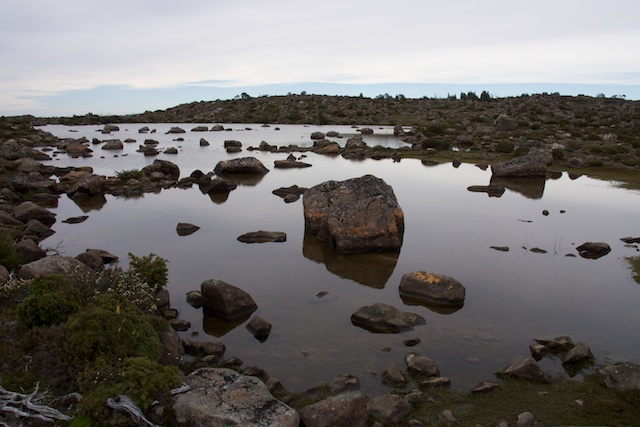


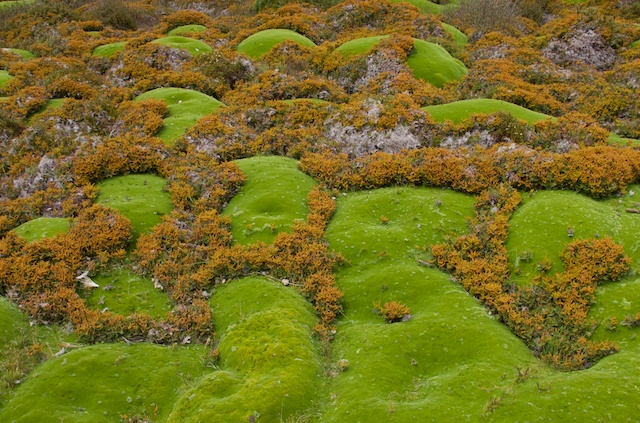


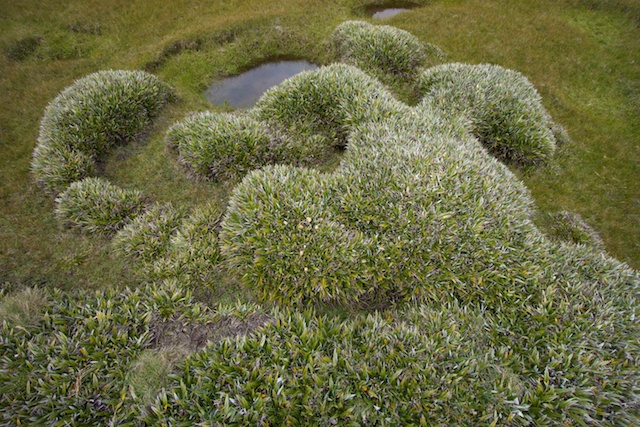
Great photos. Love the Scoparia photo, the light is great.
My impression from one trip to Walls of Jerusalem is that it is a place that, while photos can be good, nothing comes near to capturing the feel of the place. something that applies to all wild places, it is especially so here.
Great notes thank you